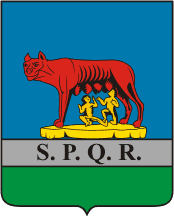NOWE WYDAWNICTWA! TAJEMNICZE MIASTO - TOM 1 ORAZ PRZEWODNIK PORÓWNAWCZY CZ.
2
-
[image:
http://www.cmsklep.eu/michal-szymanski-warszawa-tajemnicze-miasto-stara-warszawa-p-137.html]
[image:
http://www.cmsklep.eu/warszawa-pozostale-d...
niedziela, 20 marca 2011
GDAŃSK GRODZISKO
Wyświetl większą mapę
Grodzisk jest dzielnicą Gdańska, która od wielu lat pozostaje niezmieniona - głównie od czasu wybudowania tutaj przez Prusaków fortyfikacji w 1807 dla obrony przed wojskami francuskimi. Jest to jednak bardzo interesując a dzielnica i warto tu zajrzeć, tym bardziej, że jest położona bardzo blisko centrum i Starego Miasta.
Grodzisko is a part of Gdańsk, which hasn't changed for many many years - mostly since building here Prussian forts in 1807 to protect the city from French Army. But it's a very interesting place and it's worth visiting, especially that it's close to the Old Town and the centre.
Cmentarz Nieistniejących Cmentarzy
Powstał w 2002 aby upamiętnić stare, zniszczone gdańskie cmentarze różnych wyznań: żydowskie, ewangelickie, katolickie...
Cemetary of Nonexisting Cemetaries
It was made in 2002 to conmemorate old and destroyed cemetaries of different beliefs: jewish, evanghelic, catholic...
Cmentarz Żołnierzy Radzieckich
Spoczywają tu żołnierze polegli w XVIII i XIX w.
A cemetary of Russian Soldiers
There are soldiers died here in XVIII and XIX c.
Góra Gradowa z Pomnikiem Millenium
Gradowa Mountain with Millenium Monument
Grodzisko - część Twierdzy Gdańsk
Grodzisko - a part of Gdańsk Fort
Widok na Stocznię z Góry Gradowej - 46 m n.p.m.
A view on Shipyard from Gradowa Mountain - 46 meters above the sea level.
W forcie mieści się dość ciekawe, multimedialne muzeum.
In the fort, there is an interesting multimedia museum
Widok na Stare Miasto spod Krzyża Millenijnego na Górze Gradowej
A view on the Old Town from the Gradowa Mountain
Pomnik Millenium
Millenium Monument
Grodzisko jest zazwyczaj omijane przez odwiedzających miasto, a szkoda - bardzo interesujący kawałek historii.
Grodzisko is usually omited by the tourists and it's a pity. It's a quite interesting piece of history.
piątek, 18 marca 2011
RZYM \ ROMA part 1 SPACER OD WATYKANU DO ZAMKU ŚW. MICHAŁA
Wyświetl większą mapę
Rzym to największe miasto Włoch (2.750.000 mieszkańców), stolica kraju i siedziba rządu. Wieczne miasto na 7 wzgórzach. I znowu - trzeba było podzielić mój Rzym na kilka części, ponieważ materiału jest dość sporo - wiadomo, co Rzym, to Rzym. Zaczniemy od krótkiego spaceru ulicą della Concilliazione, która prowadzi z Watykanu do Zamku Św. Michała.
Rome is Italy's largest city (2,750,000 inhabitants), the country's capital and seat of government. The eternal city on 7 hills. And again - I had to divide my Rome into a few parts because there is quite a lot of material - you know what Rome is Rome. We'll start walking down the street della Concilliazione that leads from the Vatican to the Castle of St.. Michael.
Via di Porta Angelica
Brama Anielska - Porta Angelica
Angel Gate
Kościół Santa Maria di Traspontina z 1566
Santa Maria di Traspontina church from 1566
Widok w kierunku placu św. Piotra
A wiev towards St. Peter Square
Zamek Św. Michała
Dzisiejszy zamek był pierwotnie monumentalnym grobowcem cesarza Hadriana i jego rodziny. Wzniesiono go z rozkazu cesarza w latach 123-139 r. n.e. Prochy władcy spoczywały tu do XII w., kiedy to panujący ówcześnie papież postanowił przeznaczyć budowlę dla siebie. Później sarkofag Hadriana spłonął w pożarze. W średniowieczu zmieniono grobowiec w fortecę, która przez około tysiąc lat pozostawała najpotężniejszym punktem obronnym Rzymu. W dobie renesansu, w dolnej części budowli mieściły się więzienia, a w górnej luksusowe apartamenty papieskie oraz archiwum i skarbiec Państwa Kościelnego (do dziś można tam oglądać potężny kufer-sejf). Papież Juliusz II, który lubił przebywać na zamku, zlecił urządzenie w górnej części budynku specjalnej loży błogosławieństw wychodzącej w kierunku rzeki i mostu. (za naszrzym.pl)
St. Michael's castle
The castle was originally a monumental tomb of Emperor Hadrian and his family. It was built on the orders of the emperor in the years 123-139 AD Here lay the ashes of the rulers of the XII c., when the reigning pope has decided to allocate building for themselves. Later, Hadrian's sarcophagus was burned in the fire. In the Middle Ages they changed a tomb in a fortress, which remained the most powerful point defense of Rome for about one thousand years. During the Renaissance, in the lower part of the building there was the jail in the top luxury suites and the papal archives and the treasury of the Papal States (to this day you can see there a mighty trunk-safe). Pope Julius II, who liked to stay in the castle, ordered the unit on top of the building a special box in the direction of the Beatitudes overlooking the river and the bridge.
Most św. Michała
St. Michael's bridge
Tybr
Tiber River
Skrzyżowanie via Paola z Lungotevere degli Altoviti, już po drugiej stronie mostu
Crossing of via Paola with Lungotevere degli Altoviti on the other bank of the river
Subskrybuj:
Komentarze (Atom)











































































